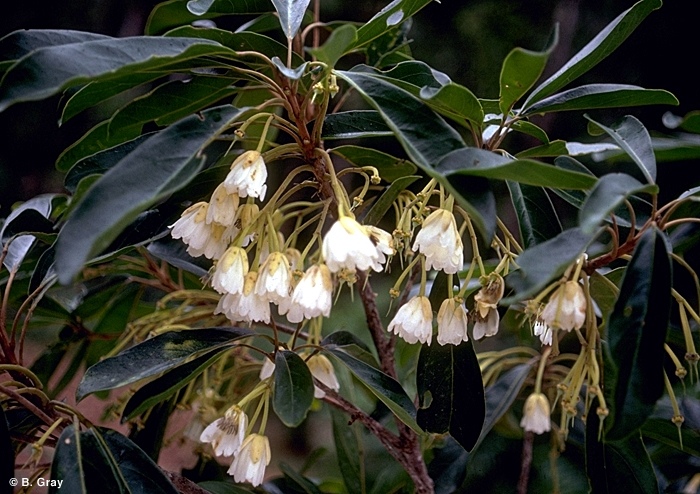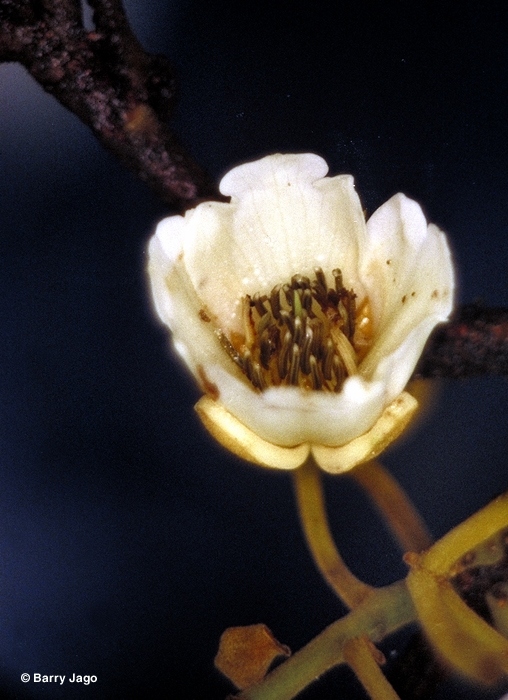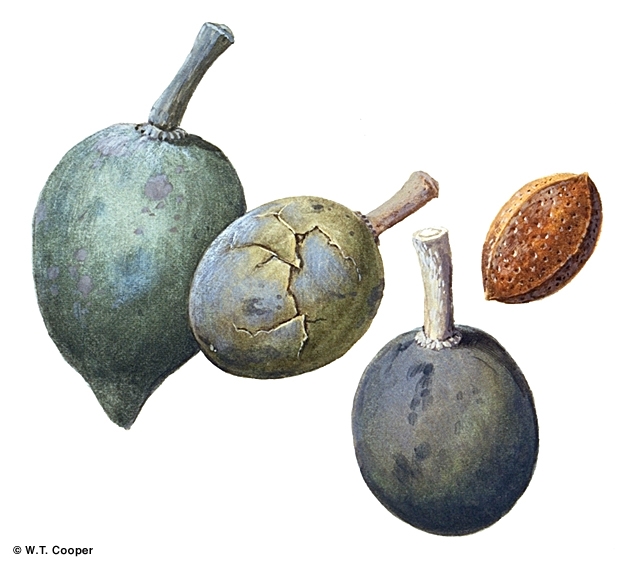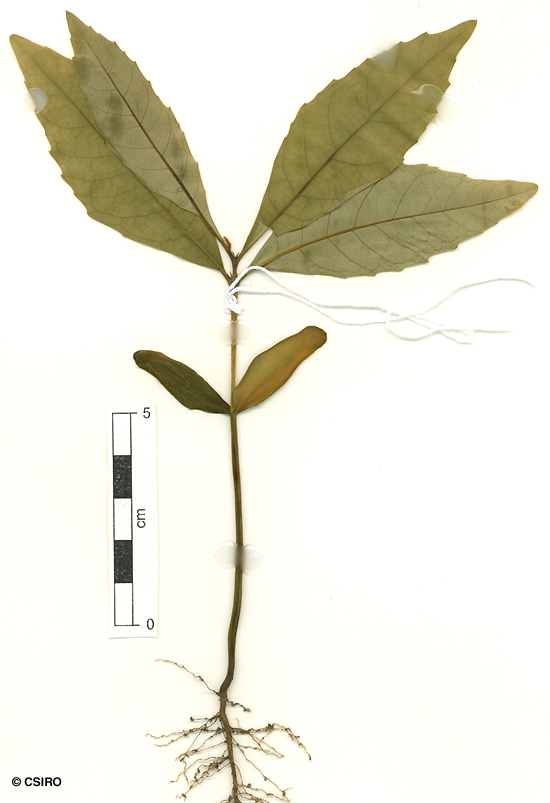Australian Tropical Rainforest Plants - Online edition
Elaeocarpus bancroftii F.Muell. & F.M.Bailey






Mueller, F.J.H. von (1886) Proceedings of the Royal Society of Queensland 2: 142. Type: On the Johnstone River; Dr.Bancroft, jun.
Johnstone River Almond; Ebony Heart; Grey Nut; Kuranda Quandong; Nutwood; Quandong, Kuranda; Nut Tree
Bark rough on large trees and wood quite hard.
Leaf blades leathery, about 8-13 x 2.5-5 cm with about 5-8 lateral veins on each side of the midrib. Old leaves turn red prior to falling.
Fruits large, about 40 mm or more in diameter. Endocarp thick, hard and horny +/- circular in transverse section, three or 4-sutured. The rat-eaten remains of the seed coats (endocarp) are normally present beneath mature trees.
Cotyledons elongate, about 30-40 mm long, fleshy. At the tenth leaf stage: leaf blade elongate-elliptic, about 12-15 cm long, glabrous; margin crenate or serrate with about 12-18 teeth on each side of the leaf blade; stipules elongate-triangular, hairy on the outside. Seed germination time 48 to 724 days.
Seeds were extracted and eaten by Aborigines and special 'Nut-stones' were sometimes left beneath the trees and used to crack the very hard endocarp.
Fallen fruit eaten by Cassowaries. Seed eaten by native rats. Cooper & Cooper (1994).
A slow growing tree with horticultural potential for parks and larger gardens. Produces large white flowers.





